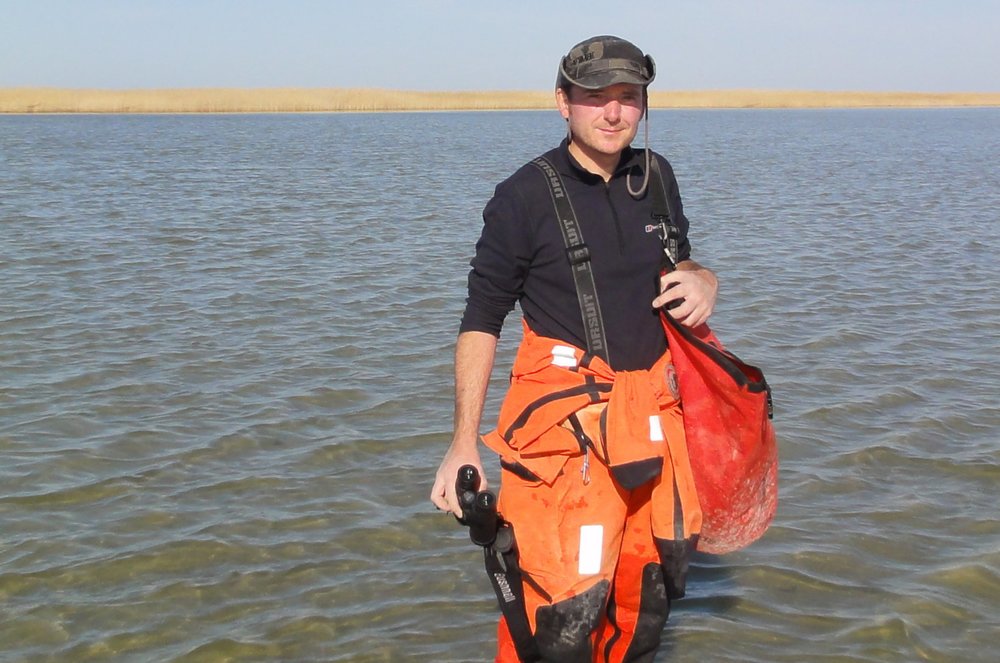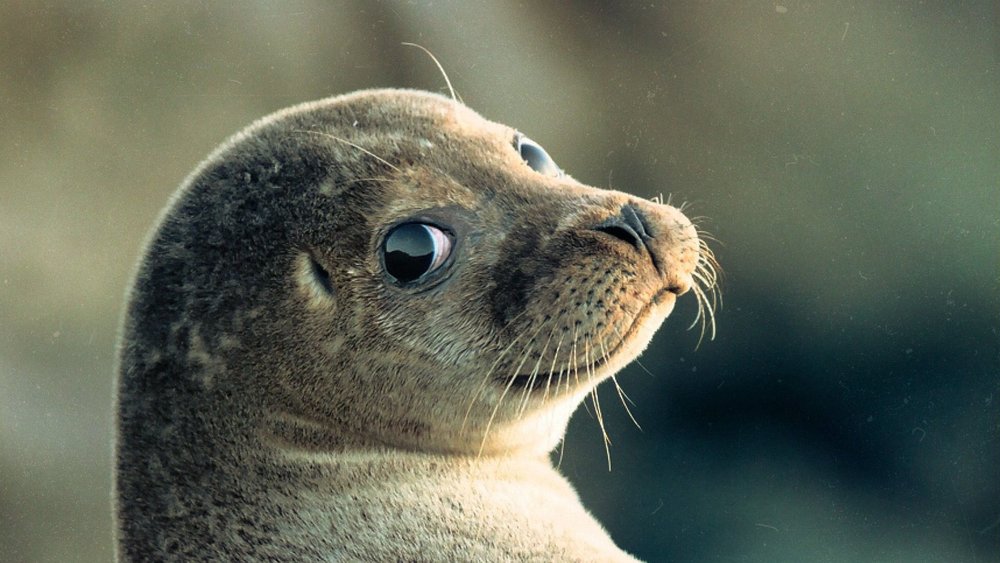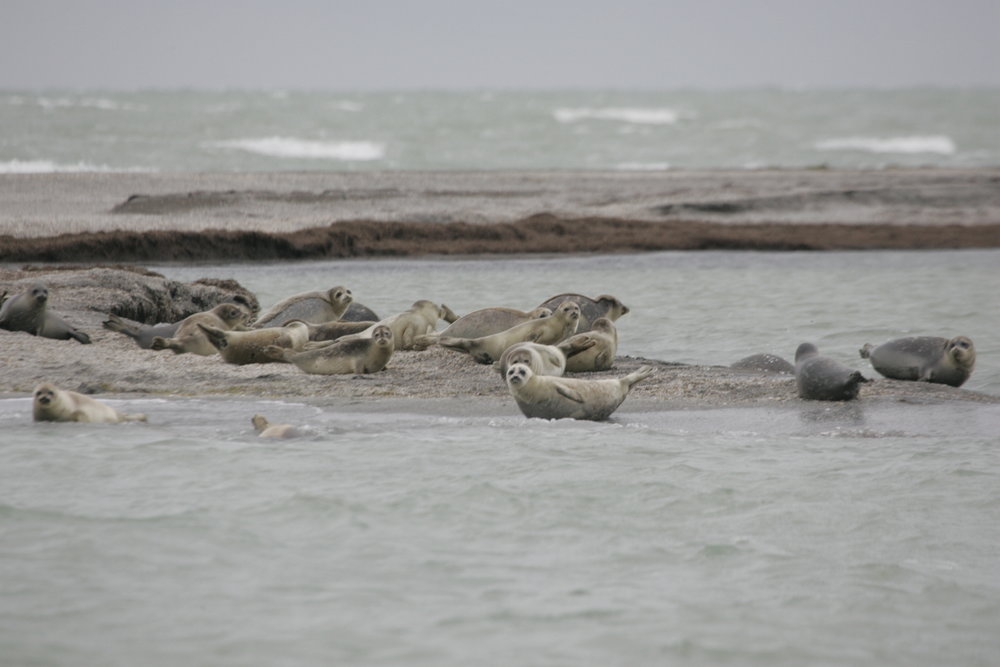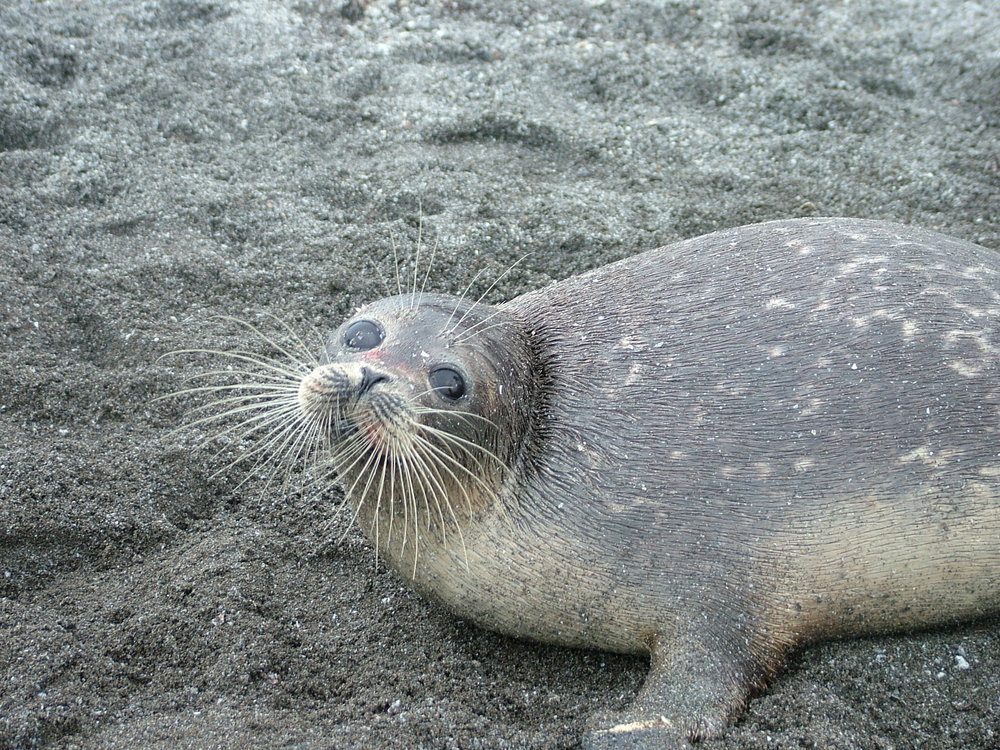Caspian seals encounter steep population decline

Caspian seal are considered as a relict species that are now confined to the Caspian Sea. Seals has been the subject of major international controversy due to the harvesting of its attractive white pups.
Seals spend a lot of their time hauling out to bask in sunshine. They like to use sandbanks along sheltered coasts, but also sometimes perch themselves on rocky islets as the tide goes out. They normally live in small groups but occasionally hundred may gather at a good place. Groups may include both sexes.
The Tehran Times conducted an interview with Simon J. Goodman from institute of Integrative and Comparative Biology, University of Leeds, United Kingdom. Dr. Goodman research focuses on investigating how patterns of genetic variation relate to disease susceptibility, and the mechanisms by which disease acts as major conservation threat. Pathogens are a major driving force in evolution and are intimately linked with much of the biological diversity we see around us.
He also works with Institutions in five Caspian states to develop solutions for conservation of the Caspian seal, which recently demonstrated to have declined by more than 90% since the start of the 20th century. Caspian seal is endangered as International Union for Conservation of Nature and Natural Resources (IUCN) said.

Q: How changes in population of seals may have affected the Caspian ecosystem?
A: This is actually a very complex issue, and to be honest I don’t think the scientific data exists to answer this question conclusively. However, we can draw parallels with several other ecosystems such as the Baltic, Caribbean, and Antarctica, where human driven declines of once numerous marine mammals have changed the overall structure of the ecosystems. Removal of top predators such as seals in the Baltic and Caribbean, and rorqual whales in Antarctica, caused expansion of other predatory species e.g. cod in the Baltic and fur seals in Antarctica. These sorts of changes are often hard to reverse making it difficult for the ecosystem to recover to its original state. In the Caspian there are so many changes due to invasive species, and overfishing of resources, that it is extremely difficult to disentangle effects from declines in seals from other human impacts. The main point is that the Caspian is now a much less diverse and less productive ecosystem than it was at the start of the 20th Century.
Caspian seals population have declined by more than 90% since the start of the 20th century.
Q: Why Pusa caspica depicted as a key stone species in Caspian Sea?
A: The Caspian seal is considered a key stone species because it is a top level predator that feeds on a very diverse range of fish and crustaceans. So changes in the seal population can potentially affect many other species.
Q: Are scientists at Leeds University interested in expanding their case study range into southern boundaries of Caspian Sea?
A: Caspian seals are a transboundary species, ranging throughout the Caspian. Therefore we always have to consider Caspian seal conservation at the level of the whole Caspian Sea. At the moment we primarily work in Kazakhstan because seal haul out sites are easily accessible there making it easier to study the seals. In Iran at present there are no places where seals haul out on land in large numbers on a regular basis. We do have colleagues in Iran and previously worked with them on changing attitudes towards seals among fishermen, trying to help them understand that seals are not dangerous or threat to them, and hopefully to make it less likely that fishermen would kill seals. This work needs to continue and I would love to do more work like this in Iran.

Q: The covert nature of illegal fishery is a big challenge for any assessment. In your opinion how much strategies such as self-reporting in formal environmental websites could help to break these limitations? How could we make it easier for volunteer reports and public assistants?
A: Again a complex topic. As a researcher, getting information about any illegal activity is extremely difficult and time consuming. The main point is to gain the trust of the people you want to engage with. How you do that will depend very much on the logistical and cultural context and the people involved. So basically you should use a range of different solutions as required, be that personal interviews or websites. Whatever you use, surveys need to be very carefully designed with cross referencing questions, so as far as possible you can check that you are getting consistent information from respondents.
The Caspian ecosystem is now a much less diverse and less productive ecosystem than it was at the start of the 20th Century.
Q: Can you point out some of major threats that cause significant population declines of Pusa caspica in this region?
A: The main threats, and the ones we understand best, are mortality from human activities, particularly hunting, and accidental catch in fishing gear, along with habitat loss. The Caspian seal was hunted commercially up until the mid-1990s, sometimes with 100s of thousands of animals hunted each year. That was the main reason for the decline of more than 1 million animals at the start of the 20th Century to around 100 thousand today. Today there is still occasional commercial hunting, and at least several thousand seals are caught in (mostly illegal) fishing nets each year.
The second half of the 20th Century saw growth of the human population around the Caspian, a lot of urban and industrial development, and expansion of fishing. Together this has meant the Caspian seal has seen a lot of its habitat disappear or become disturbed because of human activities. Today there are only a handful of places where seals regularly haul out on land, whereas this used to be a common occurrence even up to 10 years ago. Less habitat may decrease the reproductive output of the population, and can make it more sensitive to other threats.
Pollution, disease, and changes in the rest of the Caspian ecosystem because of invasive species and overfishing are also of concern, but we don’t have enough information to quantify their impact directly. Investigating these issues in more detail should be a priority for further research, but they are difficult questions to answer, requiring data collected by many different types of scientist over many years.
Finally climate change is another big concern, since this may cause a reduction in the northern ice sheet which the seals use for breeding. In future this could well be a really critical problem.
Q: Why Pusa caspica is vulnerable to diseases such as Canine Distemper virus?
A: Canine Distemper and related viruses cause disease outbreaks in many seal species and other carnivores, so Caspian seals are not particularly unusual in this respect. What was a little unusual was that this happened as large outbreaks, and so was very visible, rather than as a continual slow process with a lower incidence. Generally outbreaks like this happen when there is a large population with limited prior exposure, and the disease crosses over from a reservoir species. In the case of Caspian seals there are still lots of questions to be answered about the CDV outbreaks, but it may be that the disease jumped into the seals via feral dogs, jackals or wolves. Some people have speculated that pollution may have exacerbated the effects of the epidemic. The data on pollution levels in Caspian seals is quite limited, but as far as we can say, only a very small fraction of the population have pollutant levels high enough where it may affect immunity, and overall there was no difference in pollutant levels between animals which died from CDV versus and other causes. Therefore I do not think that at present there is any evidence for pollution playing a role in the CDV outbreaks.
Q: Have your team ever made any research about mass mortality of Caspian seals in 1997, 2000 and 2001?
A: Members of our team were part of the World Bank funded Ecotox project which ran the investigation of the outbreaks 1997-2001. In particular Dr. Sue Wilson who led that research is part of the current Caspian seal project team.
The main threats, and the ones we understand best, are mortality from human activities, particularly hunting, and accidental catch in fishing gear, along with habitat loss.
Q: Please tell me about the techniques that have been used to identify the reasons for mass mortality events.
A: The investigations into the 1997-2001 outbreaks were done by world specialists in marine mammal pathology. They conducted necropsies on dead seals, and then used a wide range of pathology tests to identify the disease causing agent. In the end it was mainly a combination of techniques known as serology, immunohistchemistry, and rt-PCR which conclusively identified CDV as the disease responsible.
Q: The invasion of Mnemiopsis leidyi has done significant harm to commercial fishing but how could this phenomena threaten Pusa caspica?
A: Potentially Mnemiopsis could affect the amount of prey species available to Caspian seals, thereby reducing food sources for them. However, we really don’t have enough information about how exactly Mnemiopsis impacts the fish that seals eat, or how flexible seal diet is (and therefore if they can switch to other things). So for now I think this is a big unknown, but a very important topic that should be a priority for future research.

Q: How much control efforts such as introduction of specialist predators of comb jellies are important in this case?
A: Controlling Mnemiopsis is likely to be of benefit for the whole Caspian ecosystem, but exactly how to best do this is outside my area of expertise.
The Caspian seal was hunted commercially up until the mid-1990s, sometimes with 100s of thousands of animals hunted each year. That was the main reason for the decline of more than 1 million animals at the start of the 20th Century to around 100 thousand today. Today there is still occasional commercial hunting, and at least several thousand seals are caught in (mostly illegal) fishing nets each year.
Q: Why life history of Caspian seals is important? Please tell me about hind-casting models and their importance.
A: By life history we mean some of the key properties of species which influence how their populations may grow or decline, such as for how long they live, at what age they start reproducing, how often they have offspring, and how many offspring are produced, and so on. Understanding these parameters helps scientists make mathematical models that let us project how populations behaved in the past, how they may grow in future, or how they might be impacted by hunting.
A hind-casting model is a population model which is projected into the past, to estimate the size of the population a particular number of generations back. We did a study using a hind-casting model and official hunting statistics going back to 1869. This allowed us to estimate that there must have been more than 1 million Caspian seals at the start of the 20th Century. Having an estimate of how many seals there were in the past lets quantify how much the population has declined based on the current population census. Quantifying the scale of the decline is very important for deciding how the species should be rated in the IUCN Red List, and providing conservation objectives for restoring the population.We already know the most important steps that are needed to protect Caspian seals. These are to reduce mortality from human sources by stopping commercial hunting (at least temporarily), and to tackle the problems about seals getting caught in fishing gear. The latter mainly happens in illegal fishing, so steps taken to deal with illegal fishing will have the knock on benefit of helping seals. The other key action is to set up protected areas for seals around critical parts of their habitat.
All these issues and more are covered in a conservation action plan that was developed by the Caspian Environment Program and officially accepted by all the Caspian countries in 2007. None of the Caspian countries have put the action plan into practice yet. There has been some consultation on the development of protected areas through the Caspian Environment Program, but it remains unclear when or if any of this will be implemented.
